Related Research Articles
A grammar school is one of several different types of school in the history of education in the United Kingdom and other English-speaking countries, originally a school teaching Latin, but more recently an academically oriented secondary school.
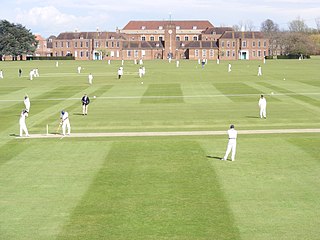
In the United Kingdom, private schools or independent schools are fee-charging schools, some endowed and governed by a board of governors and some in private ownership. They are independent of many of the regulations and conditions that apply to state-funded schools. For example, the schools do not have to follow the National Curriculum, although many such schools do. Historically the term "private school" referred to a school in private ownership, in contrast to an endowed school subject to a trust or of charitable status. Many of the older independent schools catering for the 13–18 age range in England and Wales are known as public schools, seven of which were the subject of the Public Schools Act 1868. The term "public school" meant they were then open to pupils regardless of where they lived or their religion. Prep (preparatory) schools educate younger children up to the age of 13 to prepare them for entry to the public schools and other secondary schools.
Education in England is overseen by the United Kingdom's Department for Education. Local government authorities are responsible for implementing policy for public education and state-funded schools at a local level.
The Tripartite System was the arrangement of state-funded secondary education between 1945 and the 1970s in England and Wales, and from 1947 to 2009 in Northern Ireland. It was an administrative implementation of the Education Act 1944 and the Education Act 1947.
The education system in Northern Ireland differs from elsewhere in the United Kingdom, but is similar to the Republic of Ireland in sharing in the development of the national school system and serving a similar society with a relatively rural population. A child's age on 1 July determines the point of entry into the relevant stage of education in the region, whereas the relevant date in England and Wales is 1 September.
A state school or public school is a primary or secondary school that educates all students without charge. Such schools are funded in whole or in part by taxation.
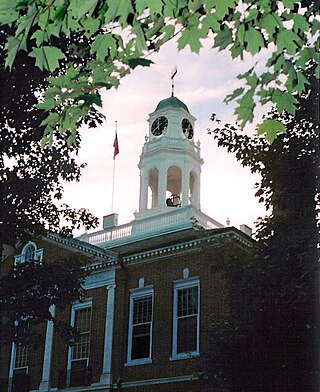
A privateschool is a school not administered or funded by the government, unlike a public school. They are also known as independent schools, non-governmental, privately funded, or non-state schools. They are usually funded by fees charged at their students.
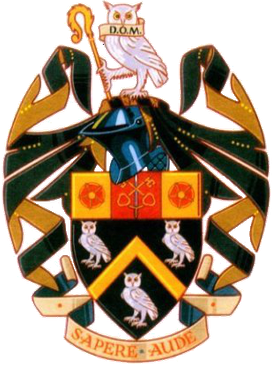
The Manchester Grammar School (MGS) in Manchester, England, is the largest independent day school for boys in the United Kingdom. Founded in 1515 as a free grammar school next to Manchester Parish Church, it moved in 1931 to its present site at Rusholme. In accordance with its founder's wishes, MGS remains a predominantly academic school and belongs to the Headmasters' and Headmistresses' Conference.

The Royal Grammar School, Guildford, also known as the RGS, is a selective private day school for boys in Guildford, Surrey in England. The school dates its founding to the death of Robert Beckingham in 1509 who left provision in his will to 'make a free scole at the Towne of Guldford'; in 1512 a governing body was set up to form the school. The school moved to the present site in the upper High Street after the granting of a royal charter from King Edward VI in 1552. Around that time, its pupils were playing cricket and their activity was later documented as the earliest definite reference to the sport. The school's Old Building, constructed between 1557 and 1586, is the home of a rare example of a chained library. It was established on the death of John Parkhurst, Bishop of Norwich, in 1575. Although defined as a 'free' school, the first statutes of governance, approved in 1608, saw the introduction of school fees, at the rate of 4 shillings per annum, along with the school's first admissions test. During the late 19th century the school ran into financial difficulty, which nearly resulted in its closure. A number of rescue options were explored, including amalgamation with Archbishop Abbott's School. Funds were eventually raised, however, which allowed the school to remain open, although boarding was no longer offered.

The Belvedere Academy is an all-ability state-funded girls’ Academy secondary- formerly independent- school in Liverpool, England. Its predecessor, The Belvedere School, was founded in 1880 as Liverpool High School. It is non-denominational, non-feepaying, and one of the 29 schools of the Girls' Day School Trust. In September 2007 it became an Academy, as one of the first two private schools in the UK to do so.
The grammar schools debate is a debate about the advantages and disadvantages of the existence of grammar schools in the United Kingdom. Grammar schools are state schools which select their pupils on the basis of academic ability, with pupils sitting an exam in the last year of primary school to determine whether or not they gain a place. The debate on selective education has been widened by measures which allow a proportion of students to be chosen based on their "aptitude" for a particular subject.

Wisbech Grammar School is an 11–18 mixed, Church of England, private day school and sixth form in Wisbech, Isle of Ely, Cambridgeshire, England. Founded by the Guild of the Holy Trinity in 1379, it is one of the oldest schools in the country.
Student–teacher ratio or student–faculty ratio is the number of students who attend a school or university divided by the number of teachers in the institution. For example, a student–teacher ratio of 10:1 indicates that there are 10 students for every one teacher. The term can also be reversed to create a teacher–student ratio.

Exeter School is a private co-educational day school for pupils between the ages of 7 and 18 in Exeter, Devon, England. In 2019, there were around 200 pupils in the Junior School and 700 in the Senior School.

Merchant Taylors' Girls' School is a selective private girls' school in Great Crosby, Merseyside, England.
The history of education in England is documented from Saxon settlement of England, and the setting up of the first cathedral schools in 597 and 604.
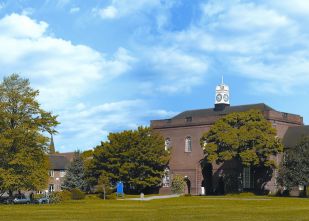
A direct grant grammar school was a type of selective secondary school in the United Kingdom that existed between 1945 and 1976. One quarter of the places in these schools were directly funded by central government, while the remainder attracted fees, some paid by a Local Education Authority and some by the pupils' parents or guardians. On average, the schools received just over half of their income from the state.
A voluntary aided school is a state-funded school in England and Wales in which a foundation or trust contributes to building costs and has a substantial influence in the running of the school. In most cases the foundation or trust owns the buildings.
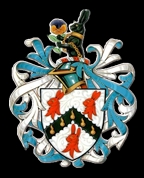
Richard Watts Charities incorporate Richard Watts Charity set up in the will of Richard Watts in 1579, as well as several other charities in Rochester, Medway. The will originally provided for an almshouse in Rochester High Street: The Poor Travellers House; over time, the money later provided for almshouses in Maidstone Road, along with other accommodation in Rochester, totalling 66 self-contained flats. Other charities absorbed by the Richard Watts Charity include St Catherine's Hospital founded under the Charity of Symond Potyn in 1315.

The history of schools in Scotland includes the development of all schools as institutions and buildings in Scotland, from the early Middle Ages to the present day. From the early Middle Ages there were bardic schools, that trained individuals in the poetic and musical arts. Monasteries served as major repositories of knowledge and education, often running schools. In the High Middle Ages, new sources of education arose including choir and grammar schools designed to train priests. Benedictine and Augustinian foundations probably had charitable almonry schools to educate young boys, who might enter the priesthood. Some abbeys opened their doors to teach the sons of gentlemen. By the end of the Middle Ages, grammar schools could be found in all the main burghs and some small towns. In rural areas there were petty or reading schools that provided an elementary education. Private tuition in the families of lords and wealthy burghers sometimes developed into "household schools". Girls of noble families were taught in nunneries and by the end of the fifteenth century Edinburgh also had schools for girls, sometimes described as "sewing schools". There is documentary evidence for about 100 schools of these different kinds before the Reformation. The growing humanist-inspired emphasis on education cumulated with the passing of the Education Act 1496.
References
- ↑ "Education (Schools) Bill Research Paper" (PDF). researchbriefings.files.parliament.uk. Retrieved 30 August 2020.
- ↑ "History". wisbechgrammar.com. Retrieved 30 August 2020.
- ↑ "The main elements of the Queen's Speech on May 14, 1997 upon the two Education Bills". BBC Politics 1997. Archived from the original on 18 June 2011. Retrieved 19 June 2011.
- ↑ "Blunkett cuts infant classes down to size". BBC. 12 February 1998. Retrieved 20 May 2012.
- ↑ "The Assisted Places Scheme". Department for Education and Employment. John Catt Educational. Archived from the original on 11 March 2013. Retrieved 20 May 2012.
- ↑ "Letter: Who benefits from the assisted places scheme?". The Independent. London. 22 December 1995.[ dead link ]
- ↑ "Assisted Places Report" (PDF). suttontrust.com. Retrieved 30 August 2020.